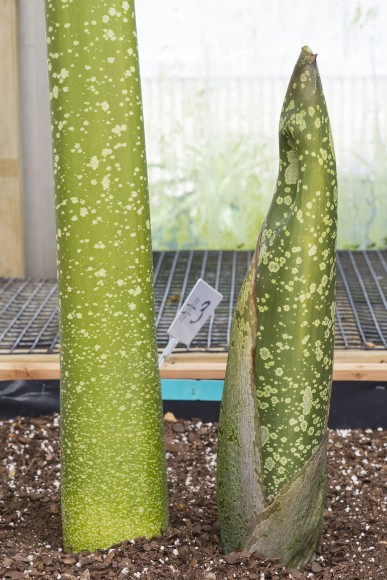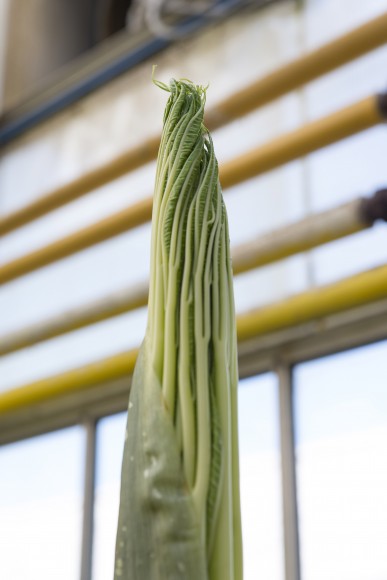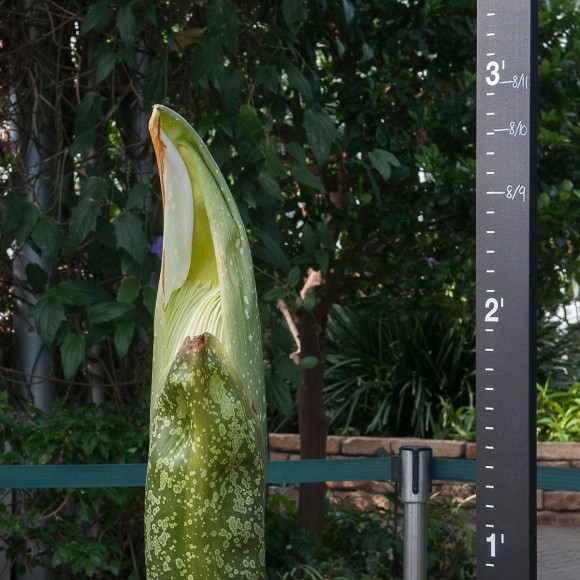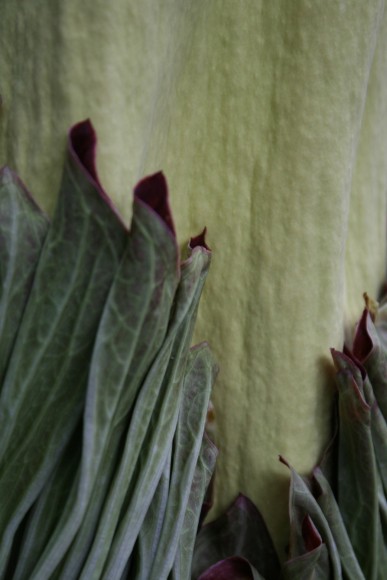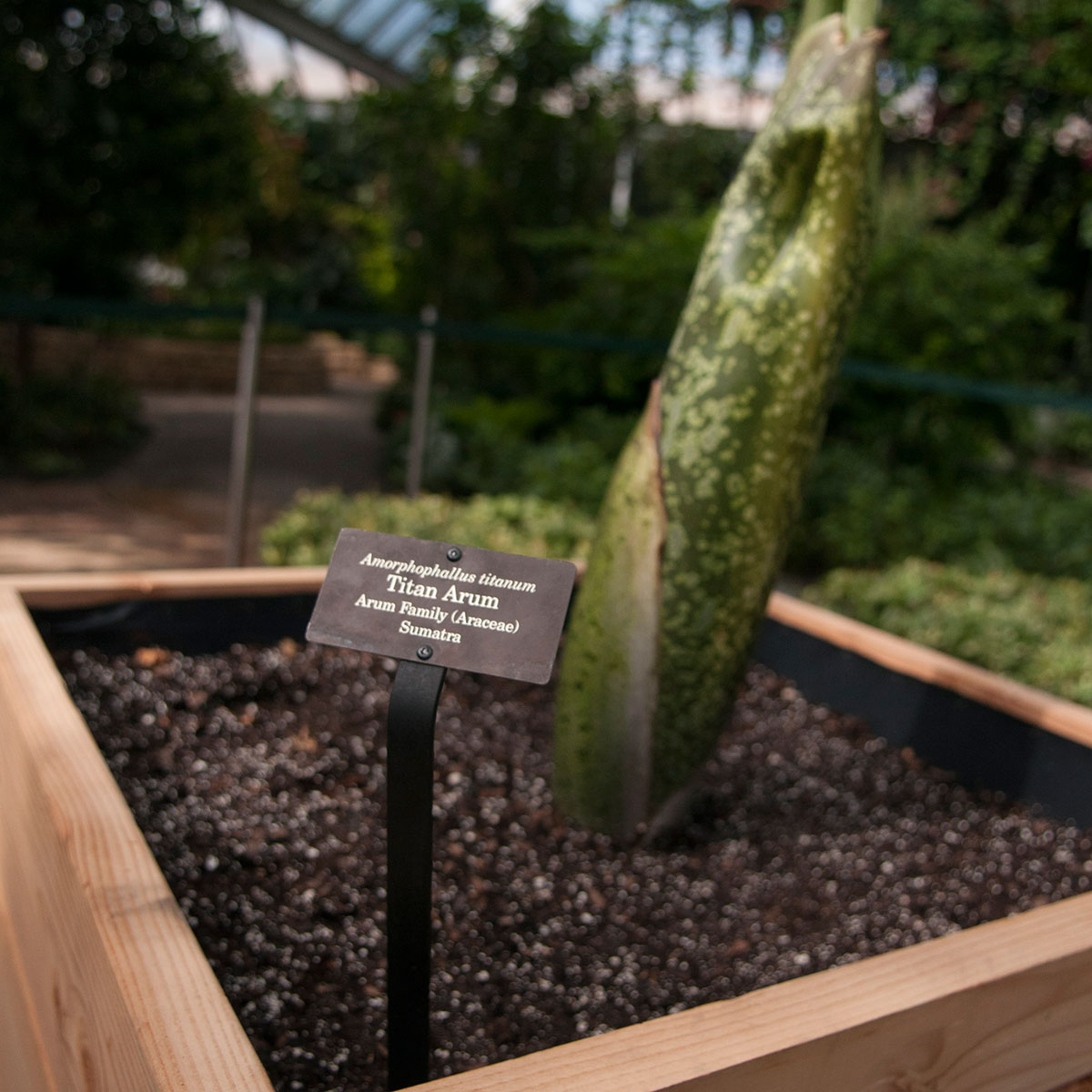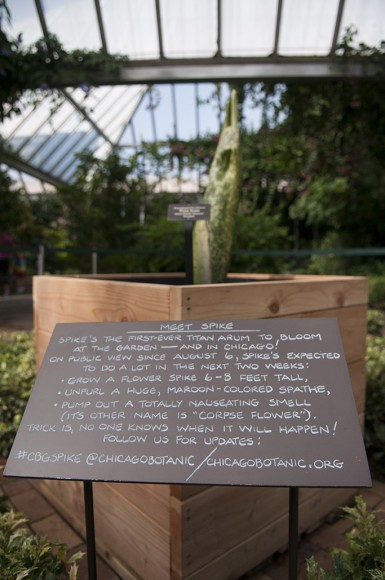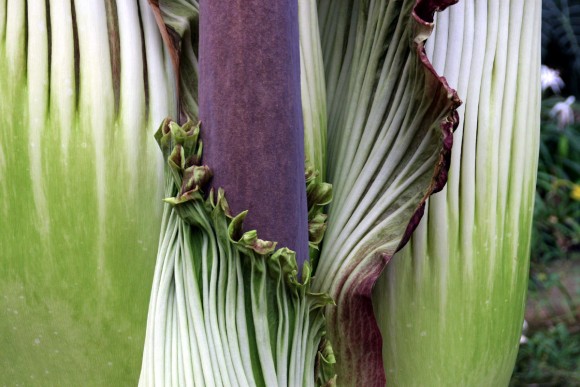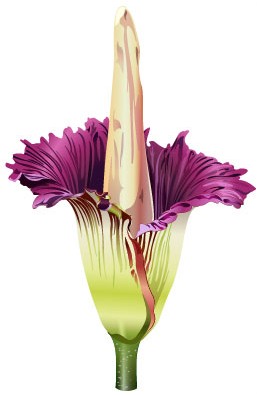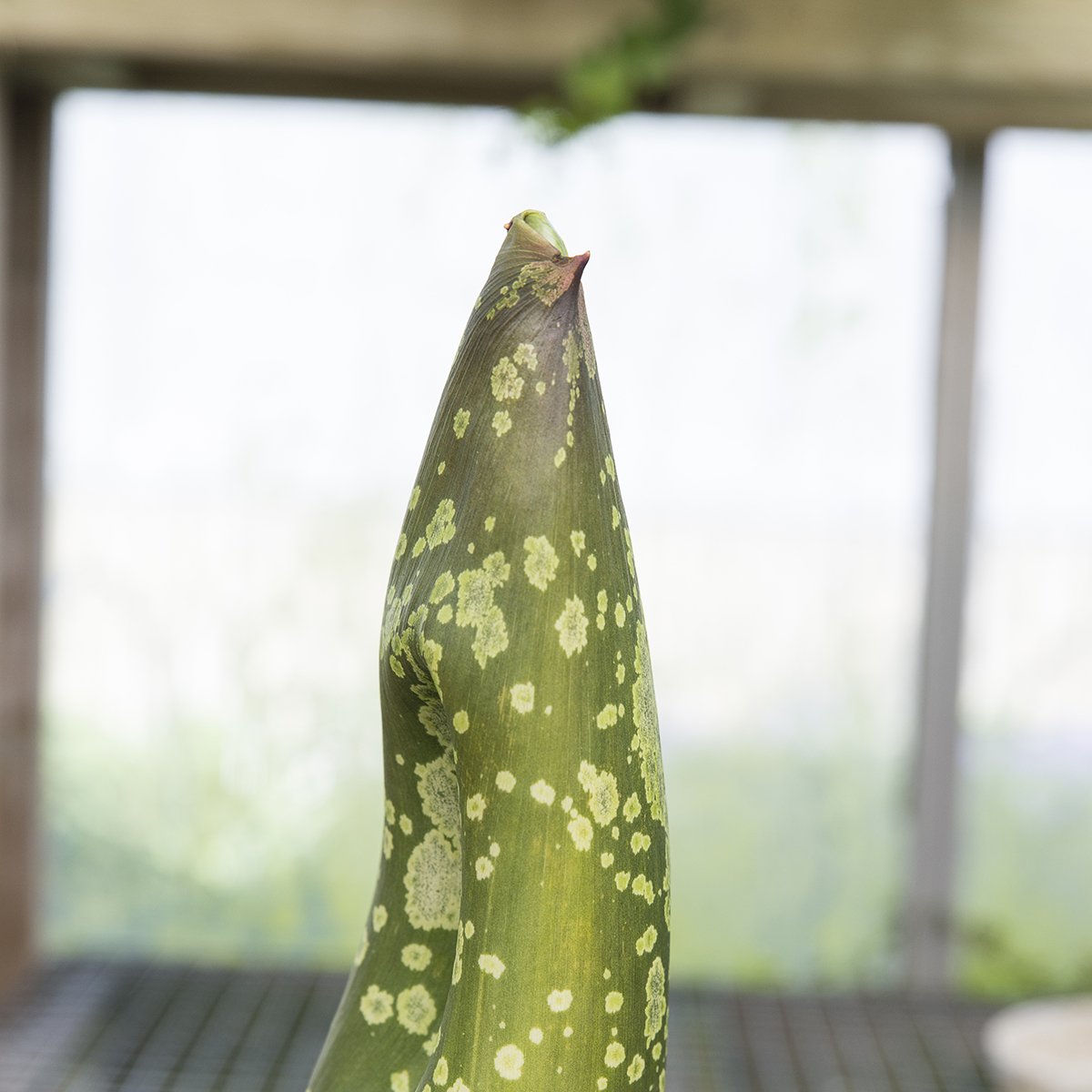“Titan Tim” Pollak here, with today’s update on Spike, our first-ever corpse flower.
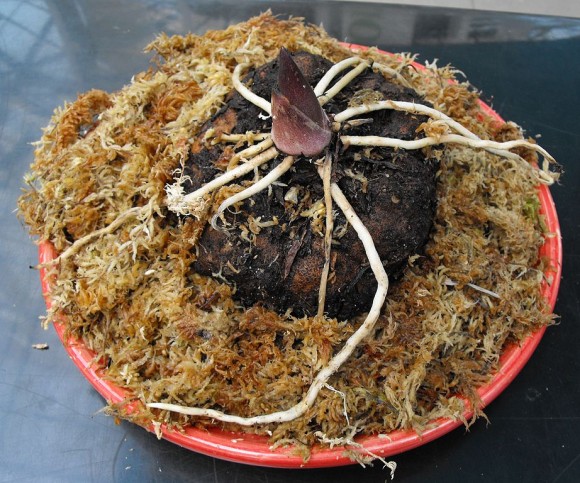
Spike just keeps on growing at the Semitropical Greenhouse, and visitors are loving it. As they learn more about the coming bloom from the docents posted there, one of the most frequently ask questions is, “How could you tell this time that Spike was a flower?”
How could we tell that Spike was going to be a flower? It’s tricky. Even the most experienced botanists have a hard time determining whether a titan arum shoot is a flower or a leaf at first. But soon enough, the clues start to add up.
- Spike is 12 years old. We know from other botanic gardens and conservatories that titan arums take a decade or more to send up their first flower shoot. We’ve been tending to this corm for about 12 years, so the timing was right.
- Is the corm big enough? The smaller the corm, the less power it has stored to send up the titan’s huge flower. This corm is about the size of a beach ball—definitely an appropriate size for flowering.
- A bulge at the base. It’s subtle, but a slight swelling at the base of the newly emerged shoot signaled something different than a leaf.
- A little off center. At 18 to 20 inches tall, we noticed a telltale sign: the tip of the shoot was off-center. While leaf shoots are true to center, we knew that a flower shoot powers up in a slightly different way. Again: it’s subtle but telling!
- Horticultural intuition. Both Deb Moore—our indoor floriculturist who tends to our nine titan arums—and I felt that the overall look of the shoot was different than what we’d experienced before with shoots that become a leaf. (While the titan’s non-bloom form may look like a stalk with multiple leaves, it is actually a single, giant leaf!) Like every gardener, you develop a sense for what’s “normal” and what’s not when it comes to your plants. We both thought that this shoot was somehow different, and it was!

Our final “sign” was to ask the experienced titan growers from other institutions. We called upon the folks at the Huntington Library, Art Collections, and Botanical Gardens in San Marino, California; Smithsonian Gardens in Washington, D.C.; Phipps Conservatory and Botanical Gardens in Pittsburgh, Pennsylvania; and Missouri Botanical Garden in St. Louis, Missouri, for their opinions and expertise. Their final confirmations gave us the thumbs up to go public with the big news that Spike would soon blast into bloom!
Like first-time parents, we are learning as we go. I can’t tell you how excited we all are in the production greenhouses—it’s a thrill to watch a plant that you’ve tended for so long finally get ready to flower! Visitors’ anticipation is rubbing off on us, too—we’ll be standing right next to you as the titan arum heads into its big night of bloom!
I’ll keep you posted…
©2015 Chicago Botanic Garden and my.chicagobotanic.org


